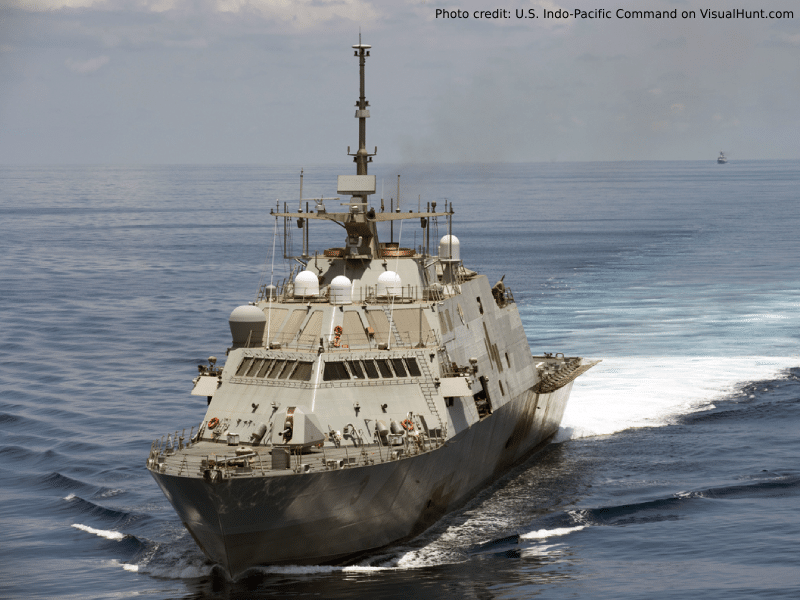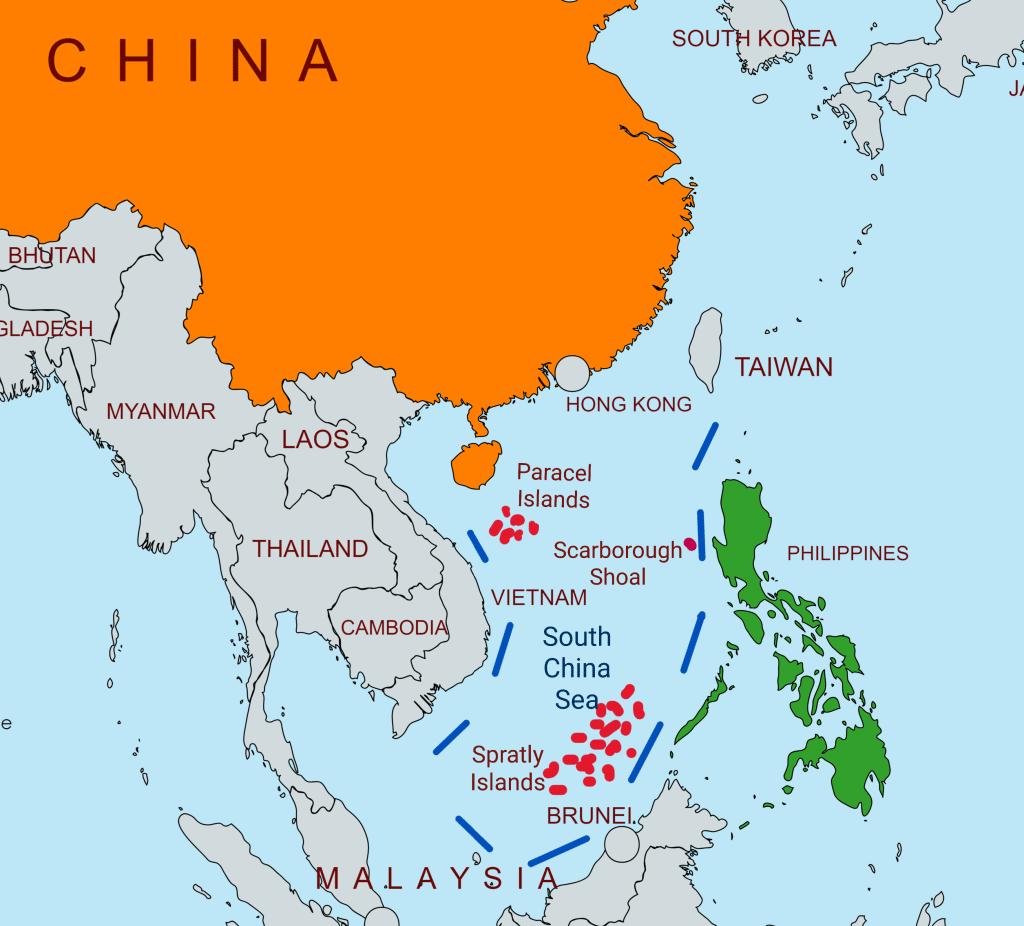
Recently conducted joint activities of the Philippine and United States Air Forces and patrols in the airspace above the waters of the South China Sea have further deepened existing tensions between the Republic of the Philippines and the People's Republic of China. Although the year 2023 began with open efforts by both countries to enhance and strengthen bilateral relations, in the second half of the year, due to growing tensions in the South China Sea region, new tensions arose between these two Asian states. The apparent shift in the Philippines' foreign policy, which, under the leadership of President Ferdinand Marcos Jr., is increasingly turning towards the United States instead of China, seems to have influenced the deterioration of relations. This raises questions about the future dynamics of their relationship. In addition to the conflicting interests of China and the US in the broader Indo-Pacific region, the official Manila and Beijing have been engaged in a dispute over the Spratly and Paracel Islands in the South China Sea for years, which was also one of the topics of the trilateral meeting between the US, the Philippines, and Japan held in April in Washington.
Unresolved territorial issues in recent years have greatly shaken not only relations between Asian neighbors but also numerous other actors present in this region due to natural resources, as well as the geopolitical and geostrategic position of the coral islands. This is evidenced by the fact that Chinese claims of sovereignty over much of the South China Sea are disputed not only by the Philippines but also by Vietnam, Malaysia, Brunei, and Taiwan, which China considers part of its territory. The waters of the South China Sea are extremely rich in fish, and various studies have shown potentially vast oil and natural gas reserves. In addition, its significance lies in global trade, as it is estimated that one-third of global annual trade passes through this maritime corridor, making it strategically and economically very important. Hence, it is not surprising that the dispute between China and the Philippines, which has been going on for decades, reached a climax in 2013 when Manila attempted to resolve it through the Permanent Court of Arbitration in The Hague. This court ruled in favor of the Philippines in 2016, unequivocally emphasizing that China has no legal basis for its claims over almost the entire sea, or the so-called nine-dash line.
China first proposed this demarcation in front of the UN in 1947, and according to it, it would be entitled to about 90% of the South China Sea. On the map, the boundary extended from the shores of China, passed between Taiwan and the Philippines, surrounded much of the Spratly and Paracel Islands, and then continued south, almost reaching the shores of Malaysia. Since the Chinese proposal did not receive support at the time, the delineated boundary has not become internationally recognized to this day, so it can be said that the arbitration court's ruling in The Hague was expected. Also, China's dissatisfaction was expected, which publicly rejected the ruling and soon after conducted tactical military exercises near the aforementioned islands. However, despite rejecting the ruling, since 2016, China has sought and largely succeeded in refraining from violating the court's decisions, while simultaneously strengthening economic ties with the Philippines. Although China is an important trading partner and one of the main export markets for Filipino products, there are concerns about the trade imbalance and the dependent position of this country, and in addition, Chinese investments that further worsen the Philippines' position seem problematic.

Although the ruling of the arbitration court was not acceptable to the Chinese side, the relations between the two countries improved during the tenure of Philippine President Rodrigo Duterte. Under his leadership, this Asian country had a reserved approach to the arbitration decision, and official Manila sought to advance and further develop economic relations with China. However, with the change of government and the arrival of Ferdinand Marcos Jr. as president in June 2022, tensions have increased and relations have gradually deteriorated. Namely, although after Marcos's official visit to China in January 2023, both sides emphasized that there is friendship between the states, as well as a desire to contribute to peace and stability in the region, the first disagreements appeared in the spring of the same year. The Philippine president went on an official visit to Washington, after which tensions arose in the South China Sea and accusations were made by the Philippines that China directed strong laser beams towards a Philippine coast guard ship.
In the following months, numerous incidents occurred in the waters of the South China Sea (or the West Philippine Sea, as it is called in this country), and one of the most significant was the collision between a Chinese coast guard ship and a Philippine supply boat. This event occurred near the Second Thomas Shoal reef on October 23 last year and was used by the Philippines to attract the attention of the international community and demonstrate the seriousness of the situation in this region. Information about such and similar incidents, which do not represent a drastic escalation of tensions on the ground, is increasingly present in the public eye, as the Philippines seeks to use the media and public diplomacy to highlight the problems of unresolved disputes in the South China Sea. Accordingly, Filipino ships often carry cameramen and TV crews who record all disputed situations and events during navigation, which can also be interpreted as an attempt by the Philippines to gain international support. On the other hand, China has recently been drawing attention to problems in disputed waters, stating that the behavior of the Philippines is becoming increasingly radical and bold, primarily due to open support from the US. To protect its interests in this part of the world, Beijing has increased the number of military exercises and patrols, leading to an increase in incidents in the South China Sea, creating circumstances that could lead to an escalation of conflict in the region.
However, it should be noted that Beijing's behavior can also be seen as its response to the Philippines' re-approach to the US. With the advent of Ferdinand Marcos Jr. to power, there is also a foreign policy shift in official Manila, as well as a more aggressive policy towards China. Due to its geostrategic position, the Philippines is a key partner of the US in this part of the world, as it is located in an area that, in addition to unresolved disputes in the waters of the South China Sea, includes the extremely important issue of Taiwan. Therefore, the official Washington has engaged in programs to strengthen the military capabilities of the Philippines in four military bases (including naval bases and an international airport), three of which are in the north of the country, facing Taiwan, and the fourth facing west and the South China Sea. Their goal is to deter further territorial expansion by China in the waters of the South China Sea, but also to monitor Chinese military movements around Taiwan. In addition, the administration of the current Philippine president has approved the expanded US military presence and thereby allowed the stationing of US forces in these bases, which is in line with the Enhanced Defense Cooperation Agreement signed between the two countries in 2014.
From the Chinese perspective, US presence in the region further exacerbates existing tensions and undermines regional peace and stability, especially considering that the US and the Philippines held the largest joint military exercises in recent history in April last year. Despite claims by Filipino and US officials that the exercises represent their commitment to peace and stability in the Indo-Pacific, official Beijing rejects such claims, stating that the maneuvers included an exercise in which the two armies destroyed a fake warship in the South China Sea. In addition, it should be added that just a few days after the aforementioned October incident, US President Joseph Biden emphasized the "firm" and unequivocal US commitment to the defense of the Philippines, guaranteed by the Mutual Defense Treaty signed in 1951, which obliges the US to defend this country in the event of an armed attack.
In line with this, there has been an increase in bilateral cooperation on the ground, with an air patrol conducted in February this year aimed at protecting territorial and national interests in the South China Sea. It represents the third joint activity carried out in less than three months, as the previous two naval military exercises were held at the end of November last year and in January this year. This formalizes the continuation of joint exercises that were suspended during the tenure of former President Rodrigo Duterte. Unlike his advocacy for closer ties with Beijing, Ferdinand Marcos Jr. believes that maritime joint activities with the US and other partners are extremely important for maintaining regional peace. This is supported by the fact that the US Navy regularly conducts freedom of navigation operations in disputed waters to demonstrate its commitment and support for international law, and a kind of partner network has been formed stretching from South Korea and Japan in the north to Australia in the south.
Further strengthening defense cooperation confirms the abandonment of previous attitudes and efforts to strengthen bilateral relations with China but also the concept of balanced relations with superpowers. It is particularly surprising that cooperation under the aforementioned agreement is currently primarily directed towards Taiwan, rather than westward towards the South China Sea. This approach and concern for Taiwan's future seem justified given the proximity of the Philippines (the base on Mavulis, the northernmost island of the Philippines, is only 88 miles from the southern tip of Taiwan) and the fact that more than 160,000 Filipinos work on the disputed Chinese island. Although official Manila respects the "One China" principle and does not maintain official diplomatic relations with Taiwan, in the past two years, it has strengthened its military ties with its allies, the US and Japan. Therefore, this country could play a key role in providing assistance to Taiwan's allies if China were to decide to launch a sudden invasion. This would further increase pressure on the Philippines by occupying Taiwan, and the forces of the People's Liberation Army would be only a few tens of miles from the Philippine coast.
In addition, the Philippines have further improved defense relations with Japan, Australia, and South Korea, and earlier this year reached an agreement to intensify cooperation with Vietnam. This Asian country also disputes China's claims to almost the entire South China Sea, so officials from Manila and Hanoi signed two documents in January on the prevention of incidents in the South China Sea and maritime cooperation among coast guards. Taking all this into account, it can be concluded that Beijing interprets such behavior as an attempt by the Philippines to create a regional bloc that would be directly aimed against its strategic goals, which could further complicate already tense relations in this part of the world. Summarizing all the above, it can be concluded that the geopolitical aspects of relations between China and the Philippines represent a key challenge to regional and global security. The status of Taiwan, territorial disputes, disagreements regarding international law, and US military presence in the region pose additional challenges for the international community in finding adequate solutions and calming tensions. Accordingly, there are different approaches, with some advocating peaceful dispute resolution and respect for international law, while others prefer further strengthening of military presence to deter China from aggressive actions. In addition to diplomatic efforts and strengthening bilateral relations, special attention is also focused on the active participation of regional intergovernmental organizations such as the Association of Southeast Asian Nations (ASEAN). However, progress in resolving territorial disputes remains limited, and reaching long-term agreements remains a challenge.


